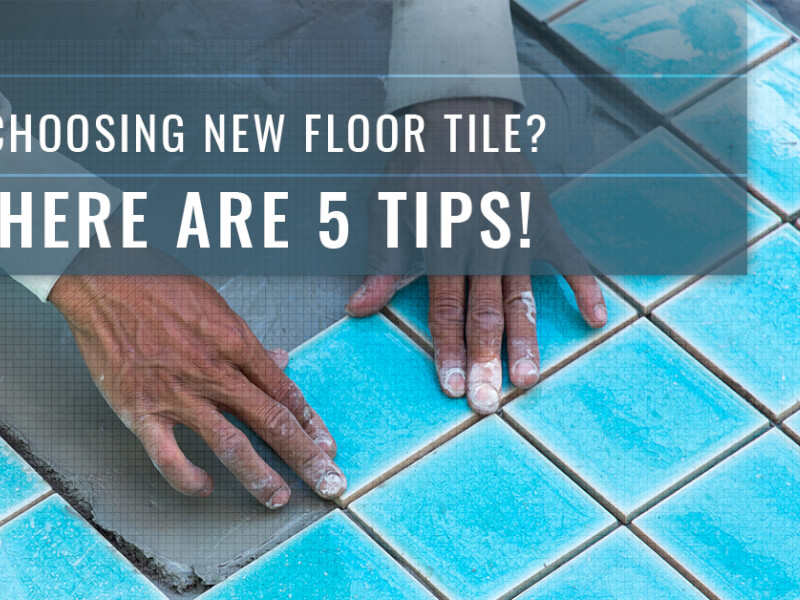Choosing New Floor Tile? Here Are 5 Tips!
You’re ready to choose new floor tile for your San Fernando home, but you’re not sure which to choose. There are dozens of tile types and hundreds of tile options to select from. How do you find the best one for your home?
In this article, Transworld Tile is here to help you find the floor tile that best fits your home project. What’s more, we’re going to give you five tips on how to choose your floor tile. These tips make it super easy to get your tile selections down to at least three or four options, which makes the decision process way easier than choosing from a few dozen.
5 FLOOR TILE CHOOSING TIPS
There are quite a few factors you need to consider when purchasing your floor tile. Keep in mind that knowing these four factors are important to choosing the best tile for your home: hardness, porosity, slip resistance, and material. Here are the five tips on how to choose the best floor tile for your home:
#1. EXAMINE TILE HARDNESS
Tile hardness is an important factor. If you get a tile that’s too soft, it will degrade and need replacement much sooner than a harder rated type of tile. When you’re considering replacing your floor tile, it’s best to find a harder tile, at least a III rating to ensure that you have a long lasting floor that endures your lifestyle. Here are the general tile hardness ratings for reference:
Class I — cannot withstand foot traffic. Only use for wall applications.
Class II — Light foot traffic. Used for interior wall applications. Use only in locations with soft-soled or non-scratch foot traffic.
Class III — Moderate foot traffic. Used for walls, countertops. Appropriate for areas with normal foot traffic and most rooms in the home, excluding kitchen, entryway, and halls.
Class IV — Heavy foot traffic. Used in commercial flooring applications. Used in any room of the house.
#2. DETERMINE TILE POROSITY
Tile porosity is the second most important factor behind hardness. How porous a tile is determined how much moisture it will eventually absorb. Porous tiles tend to absorb more moisture due to its holes-to-solids ratio within the tile. There is a classification system, which we share below:
Non Vitreous — Water absorption exceeds seven percent.
Semi Vitreous — Water absorption is between three and seven percent.
Vitreous — Water absorption is between 0.5 percent and three percent.
Impervious — Water absorption is between 0 and 0.5 percent.
The amount of water absorption is directly correlated with how well the tile will perform in moist environments. The more moisture in an environment like a bathroom or kitchen, the harder it is for a tile to last a long time. When you choose a hard, impervious tile type, it increases the chances of that tile resisting water damage over its lifespan.
#3. CHOOSE PORCELAIN TILE
If you’re still not sure which tile is going to work the best for your home, go with porcelain tiles. This material is durable, strong, resistant, and great for many home tile applications. It comes in a variety of colors, shapes, and sizes to fit virtually any one of your tile needs. Advanced tile technologies make it so that you can find hard, impervious porcelain tile that will last you years to come.
#4. CHECK FOR SLIP RESISTANCE
Imagine floor tiles. They tend to be a little more slippery than your average wood or linoleum flooring. Add water and tiles can turn into the equivalent of ice on a cold winter day. There is a way to find slip-resistant tile for your home. When shopping for tiles, you want to find those that show a Coefficient of Friction (CoF) rating on the tile information sheet. This rating will give you the foot pounds or pounds per square inch that the tile resists before slipping. What’s more, you want to go with 4 by 4 sized tiles or smaller to increase traction. Finally, choose a tile that has a textured surface.
#5. DETERMINE THE GOAL FOR THE SPACE
Once you determine what you’re trying to accomplish with each space, you can then find tiles that fits that goal. For example, a kitchen that you want to make look larger, as well as more luxurious could do well with some large stone tile flooring and marble countertops. On the other hand, a small, quaint bathroom could use tiny porcelain tiles to give the space warmth and personality. Depending on how you want a space to look and feel, you can choose your tile accordingly.
Transworld Tile has served San Fernando, Thousand Oaks, and Los Angeles for more than 30 years. Stop by our showroom or give us a call to find the best floor tile for your home.
